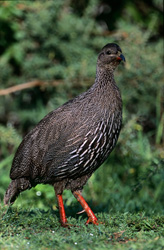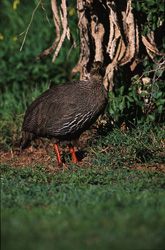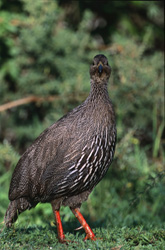Discover the Gray-headed Kingfisher – A Master of Coastal Ecology with Striking Plumage and Fascinating Behavior
The Gray-headed Kingfisher (Halcyon chloris) is a captivating bird species distinguished by its vibrant plumage and remarkable skills in coastal ecology. This kingfisher inhabits tropical and subtropical coastal regions of Africa, particularly along the Indian and Atlantic Oceans. With its distinctive gray head markings and the vivid colors of its wings, the Gray-headed Kingfisher is easily recognizable and a beloved resident of mangrove forests, river deltas, and coastal rocky areas. Habitat and Distribution The Gray-headed Kingfisher prefers dense vegetation within coastal ecosystems, serving both as a breeding and hunting ground. Its habitat spans various countries including Kenya, Tanzania, South Africa, and along the East African coast to Mozambique. Its adaptability to different coastal environments makes it a crucial indicator of the health of these ecosystems. Diet and Hunting Behavior As a skilled hunter, the Gray-headed Kingfisher primarily feeds on small fish, insects, and crustaceans. Utilizing its swift and precise flight, it dives into the water to catch prey, with its elegant flight technique and sharp vision giving it an advantage over other predators. This behavior is not only impressive but also a vital component of the food chain in coastal areas. Reproduction and Breeding Behavior The Gray-headed Kingfisher constructs intricate nests from twigs and bark, typically located in tall trees or shrubs near water bodies. The breeding season is marked by social interactions and pair bonding, with both males and females actively participating in nest building and chick rearing. Nest care and chick upbringing are essential for the species' survival and reflect complex social structures. Threats and Conservation Measures Despite its wide distribution, the Gray-headed Kingfisher faces various threats including habitat loss due to deforestation, water pollution, and climate change. Conservation measures such as preserving mangrove forests, regulating fishing activities, and promoting sustainable coastal management practices are crucial to ensure the survival of this remarkable bird species. Role in the Ecosystem The Gray-headed Kingfisher plays a significant role in coastal ecology by regulating fish and insect populations. Additionally, it serves as an indicator of the ecological health of its habitats, as it is sensitive to environmental changes. Through its activities, it supports the balance within the ecosystem and promotes biodiversity. Fascinating Features Beyond its impressive plumage, the Gray-headed Kingfisher captivates with its acrobatic flight maneuvers and ability to hunt in hard-to-reach areas. These unique traits make it a popular subject for ornithologists and nature enthusiasts alike. In summary, the Gray-headed Kingfisher is an outstanding example of the diversity and complexity of coastal birdlife. Its beauty, combined with its ecological impact, makes it an indispensable part of the natural landscapes that need to be protected and preserved.






